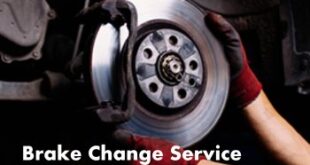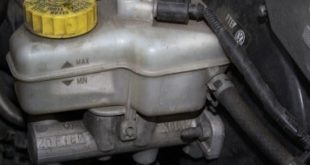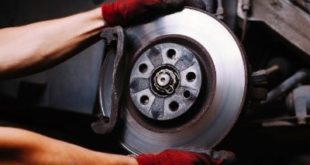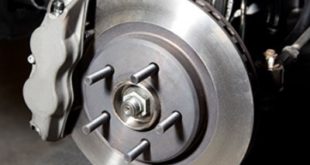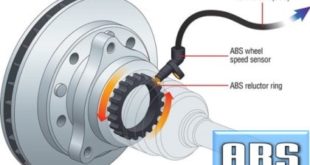If you are not having your brakes regularly maintained then you may start to notice some of the warning signs of brake wear. Squealing or grinding noises, pulsation in the brake pedal, the brake pedal going down very close to the floor before the brakes engage are all indications that you need to get the brakes checked.
Listen to Your Brakes
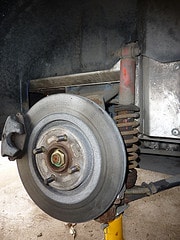 Cars have a small indicator tab on the brakes. The indicator tab lets you know when it’s time for brake service. It will start to make a squealing noise when the brakes are worn down. And sometimes, when you hit the brakes it goes away. So, people think it’s not the brakes because it goes away when you hit the brakes. But, in reality, it’s because when the pad touches the rotor, it swells up the pad and pulls the tab away (stopping the noise). But eventually, the noise will return.
Cars have a small indicator tab on the brakes. The indicator tab lets you know when it’s time for brake service. It will start to make a squealing noise when the brakes are worn down. And sometimes, when you hit the brakes it goes away. So, people think it’s not the brakes because it goes away when you hit the brakes. But, in reality, it’s because when the pad touches the rotor, it swells up the pad and pulls the tab away (stopping the noise). But eventually, the noise will return.
Fix noisy brakes before they cause problems
As soon as you hear that telltale squealing sound, get the brakes serviced. What can be done, is to replace the pads and resurface the rotors. If the problem is not fixed right away then the rotors will be ruined. That means they will have to be completely replaced instead of just resurfaced. So, to keep the brake service cost low it is important to attend to noisy brakes promptly. Also, you need to check and regularly change the brakes fluid.
Here is a quick summary of what to look and listen for to know if your vehicle’s brakes need service:
- Soft or inconsistent brake pedal
- Stiff brake pedal
- Constantly lit brake warning light
- Noisy brakes making squealing or grinding sounds
- Shuddering or vibrations when applying brakes
What if the brakes fail while driving?
A car’s brake system is an incredibly important safety feature of a car. If you are mechanically minded and take care of your car’s maintenance yourself, then do not wait until the brake pads are completely worn out. Keeping the brake system in tip-top shape – from the brake pads to the rotors – should be every driver’s top priority.
But, what can you do if you are driving along in your car, step on the brake pedal, and nothing happens? The first thing to remember is to stay calm. Try pressing the brake pedal repeatedly, then press the pedal to the floor. The brake failure maybe just a temporary weakness of the brake and this motion can be enough to get it working again.
If that does not work, downshift and pull the handbrake while pressing the lock button, which should cause gradual deceleration until the car stops. Do not abruptly engage the handbrake as you may spin into a U-turn.
 Car Service Land Coupons for Oil change, Tires, Wheel alignment, Brakes, Maintenance
Car Service Land Coupons for Oil change, Tires, Wheel alignment, Brakes, Maintenance
